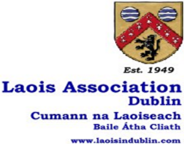The museum tour commenced in the historic Clarke Square in glorious summer sunshine

Guided Tour
On Thursday the 15th of May 2025 the members and friends of the Laois Association Dublin enjoyed a memorable day visiting the National Museum of Ireland Collins Barracks, where a diverse range of free public tours are available. The Barracks was the longest continuously running military barracks in Europe, from 1707 to 1993.
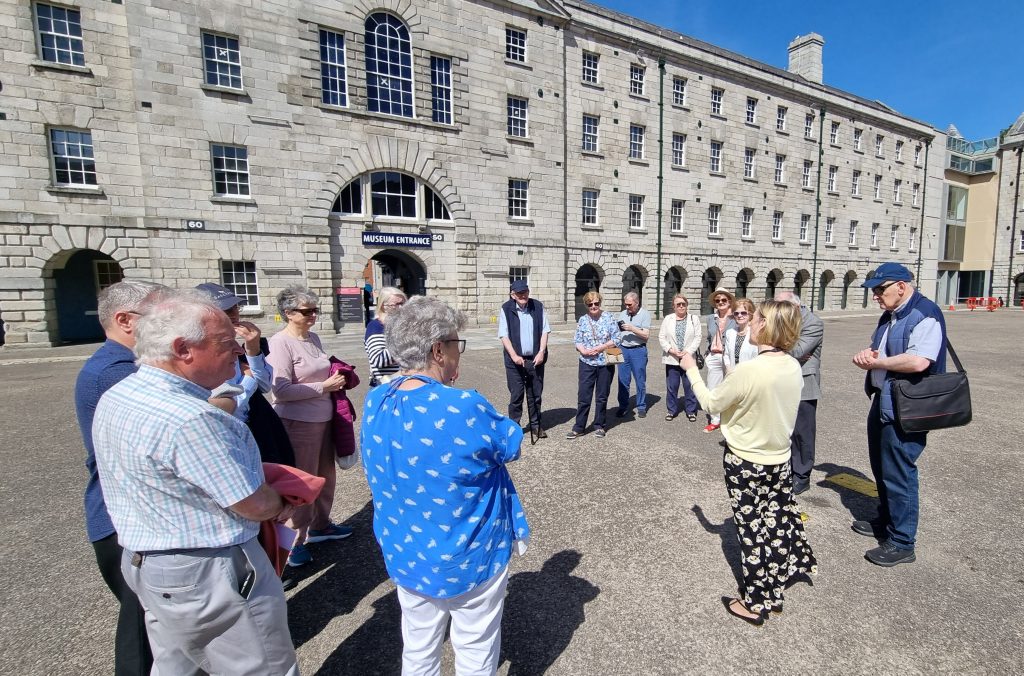
Our guide Catriona welcomed our group and she gave us a rich, informative and interactive tour which commenced in the historic Clarke Square in glorious summer sunshine with clear blue skies above. We learned that there are more than 4 million objects in the National Museum of Ireland collection. Ireland didn’t have a museum until 1877.
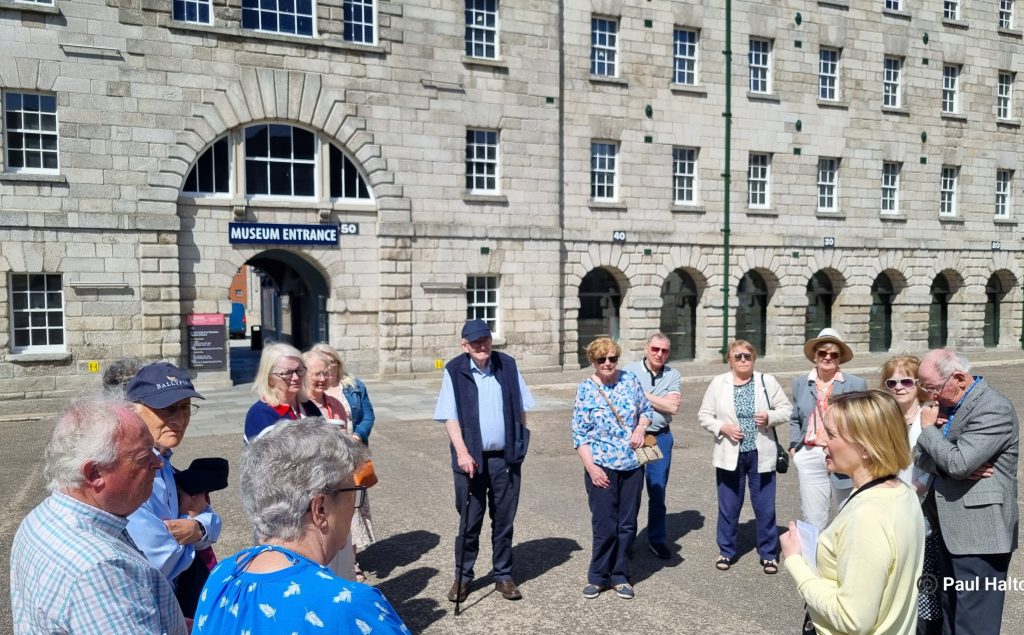
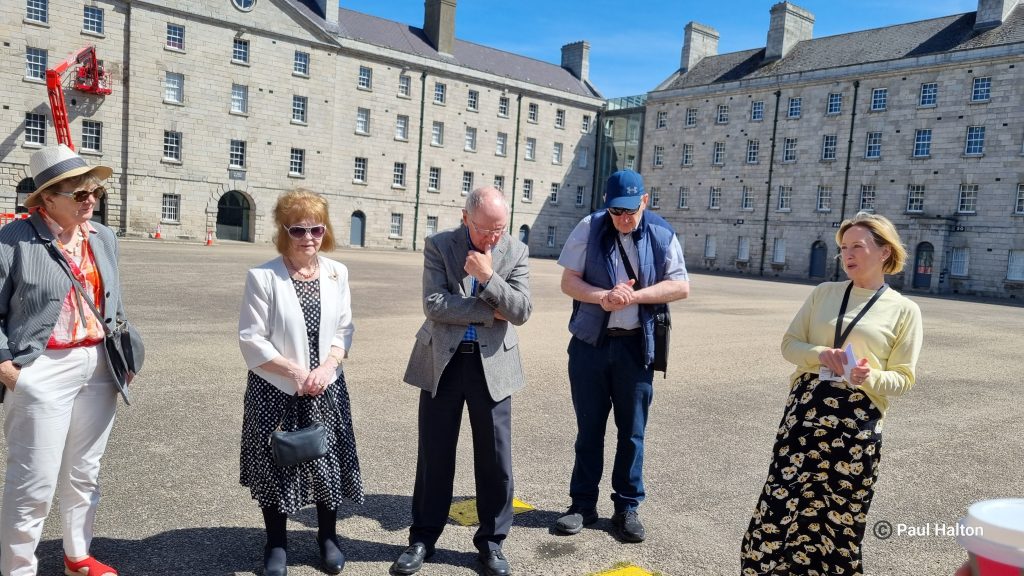
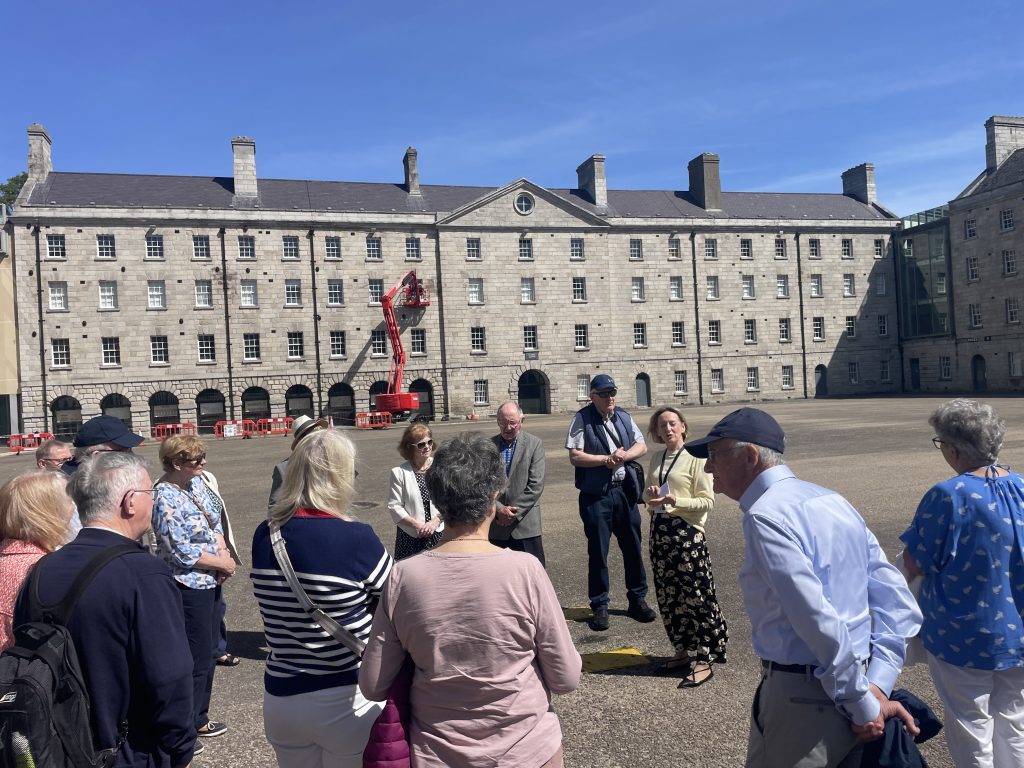
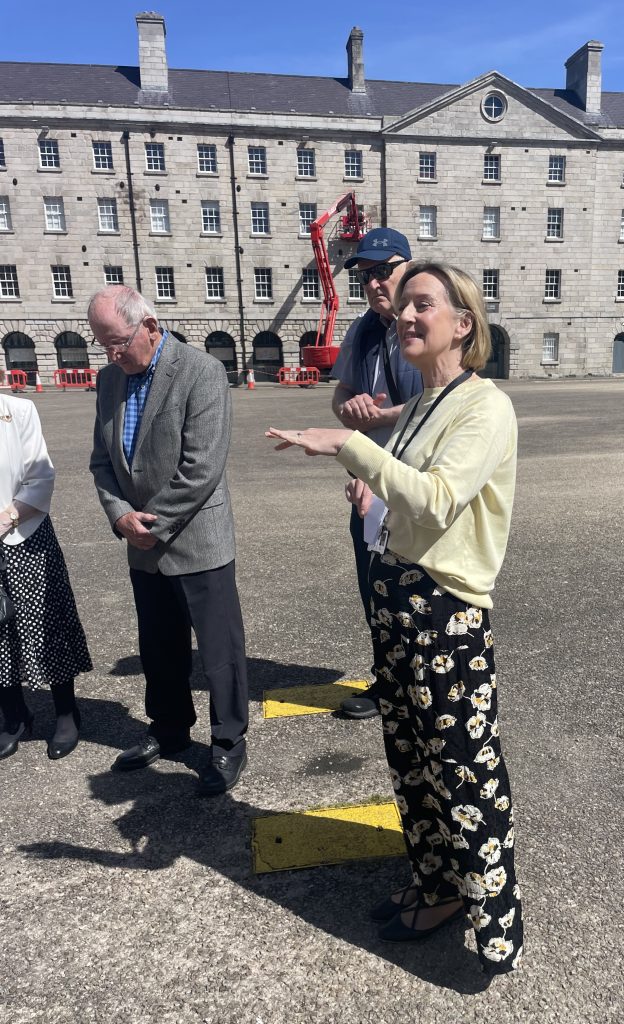
The Stokes Tapestry
Our guide told the story of the Stokes Tapestry with remarkable enthusiasm. She began by telling us about the very young Stephen Stokes joining the army and then she described the various panels in detail.
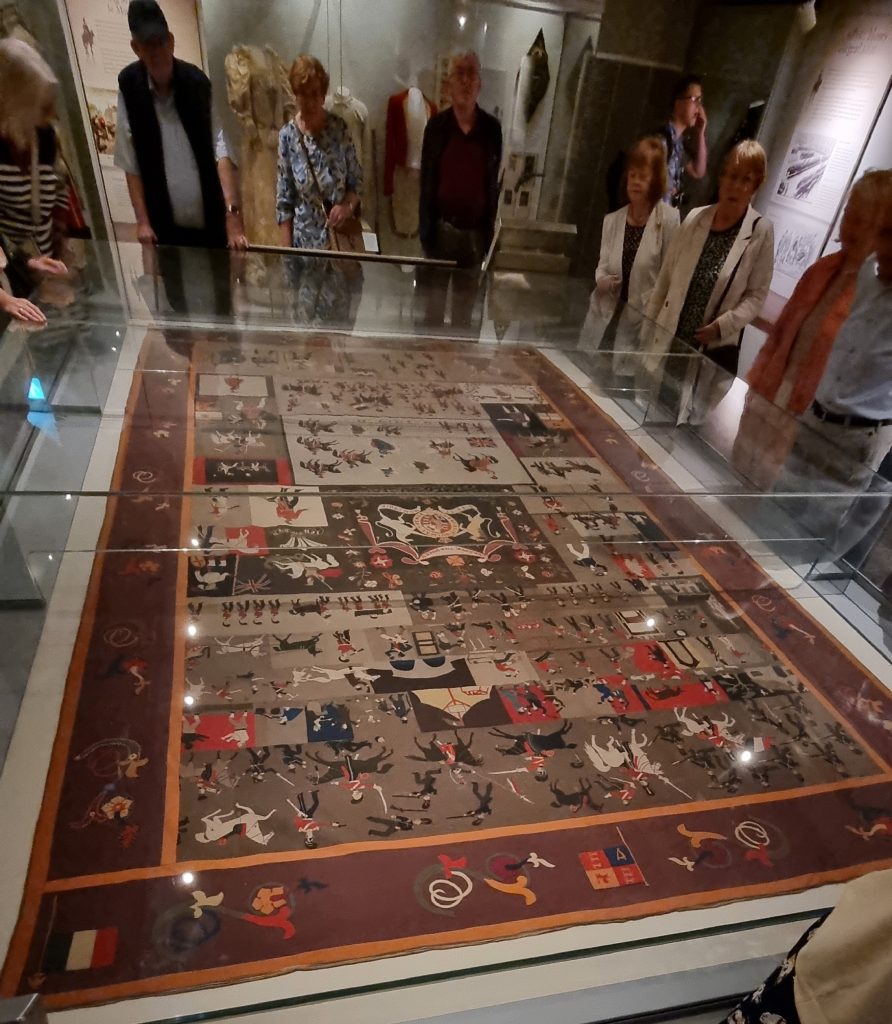
Steven Stokes was born in 1802 in Plymouth in England and he joined the army at 16 as a very young drummer boy. His regiment was the Royal Dragoons which is a very famous British regiment that captured the standard of the French army in the battle of Waterloo in 1815. Steven Stokes, like a lot of soldiers at that time, would have been very good at sewing because sewing had to maintain their uniform and to make sure they were in perfect condition, and he used his skills to make this tapestry. It took him about 25 years to make it and there are over 250 figures on it. It tells the story of life in the barracks, but it also includes a lot of Irish symbolism.

The very first panel depicts the battle of Waterloo, but he didn’t fight in this war. He would have heard all the stories from his father’s soldiers. The next panel is an insight into ordinary life at that time in Dublin and this relates to a very famous / infamous fair that took place annually in Dublin called the Donnybrook Fair and that’s where the bus station is now. The fabulous depiction of Donnybrook Fair shows all the various kinds of carry on. The soldiers would have been really looking forward to going to the Fair every year. Our guide showed us the depiction of bare-knuckle boxing which was very popular in the 19th century. In another panel, you see a young fellow pickpocketing.
Looking really, closely at the tapestry you can see panels relating to life in the barracks. We see soldiers being punished. Even tiny misdemeanors were punished very severely by the British Army. Flogging was very popular and breaking stones was another very common punishment and you can see soldiers breaking stones and being watched over by the police guards.
Further down the tapestry, a funeral procession is shown, and you can see the coffin is covered with a black cover and you’ve got the black plumes in the helmets of the soldiers and their weapons are inverted as a sign of respect. We see the army band leading the funeral procession into the Chapel and then below that you can see two soldiers talking to a very poor man and what they’re doing there is trying to encourage him to join the army.
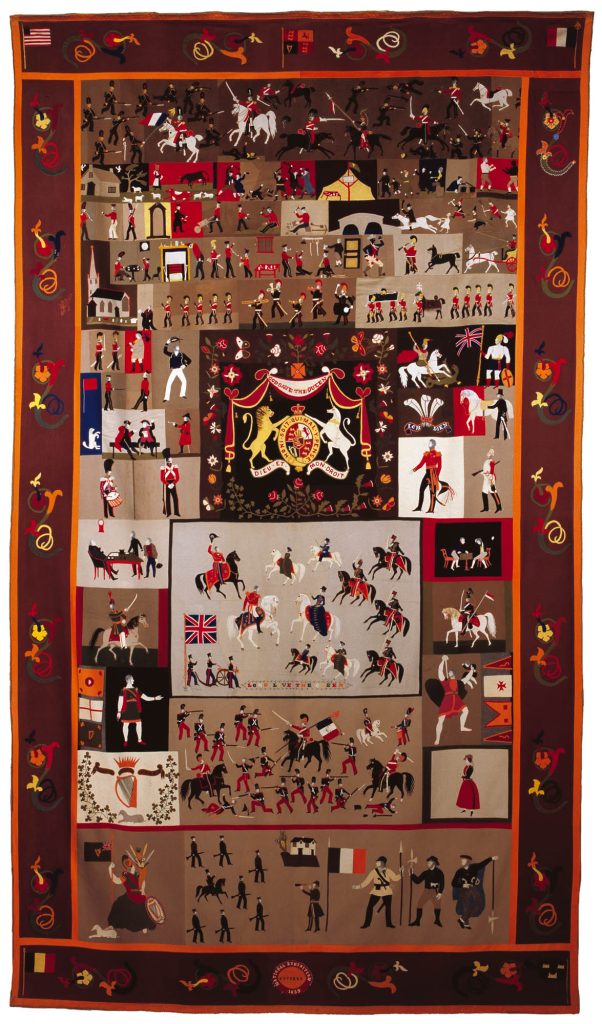
Curator’s Choice
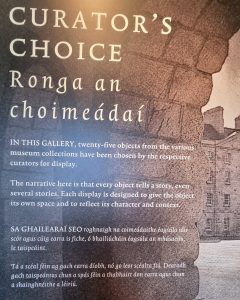
There is a special gallery at the National Museum of Ireland, where 25 objects are on display from the various collections that have been chosen by the respective curators. The following are photographs of some of the objects that our guide brought to our attention.
Worth Gown
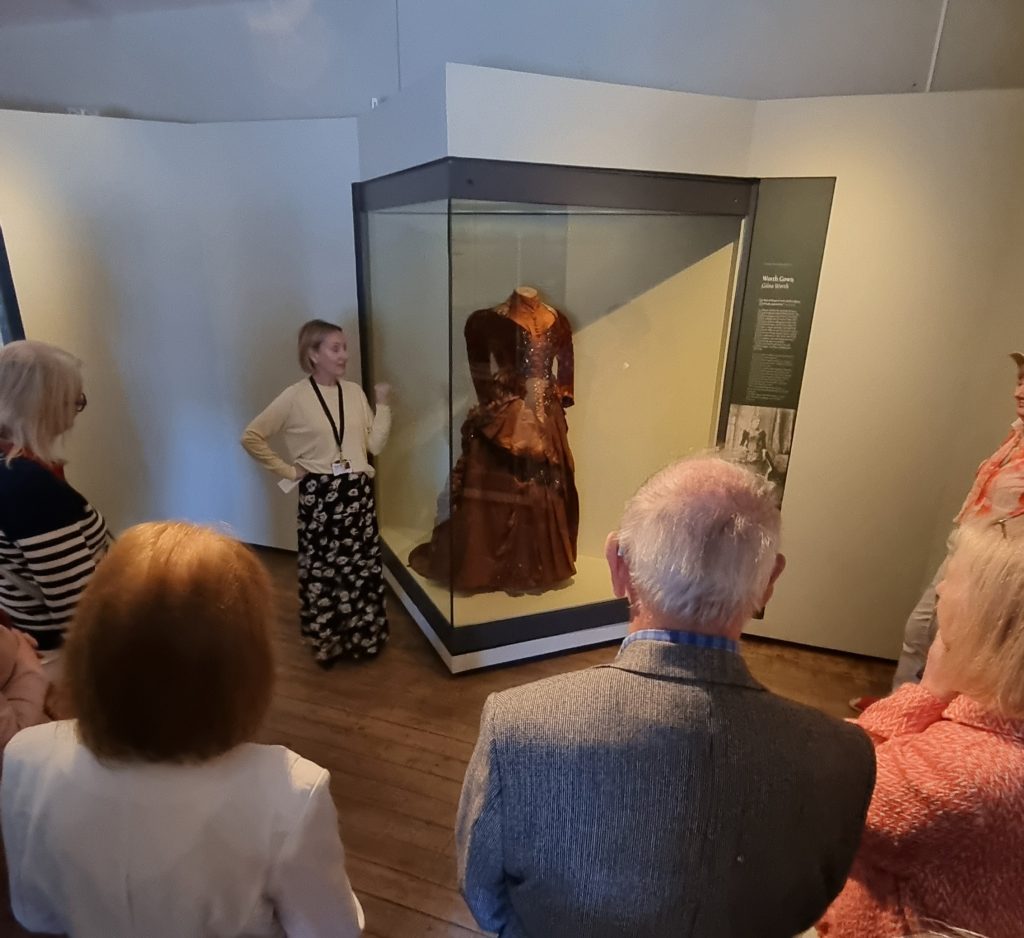
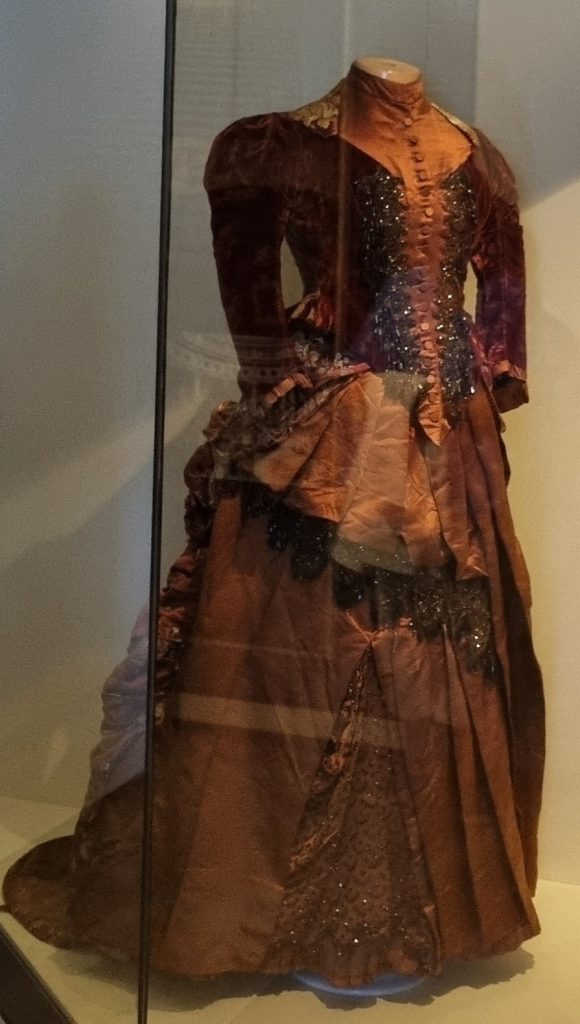
Mether Vessels
Mether vessels originating from at least the 10th century were unique to ancient Celtic Ireland. A mether can be described as a two or four handled medieval wooden drinking, or storage, vessel that typically features a quadrangular mouth tapering to a narrower rounded base. The body and handles were hand-carved from a single piece of wood such as yew, alder or willow.
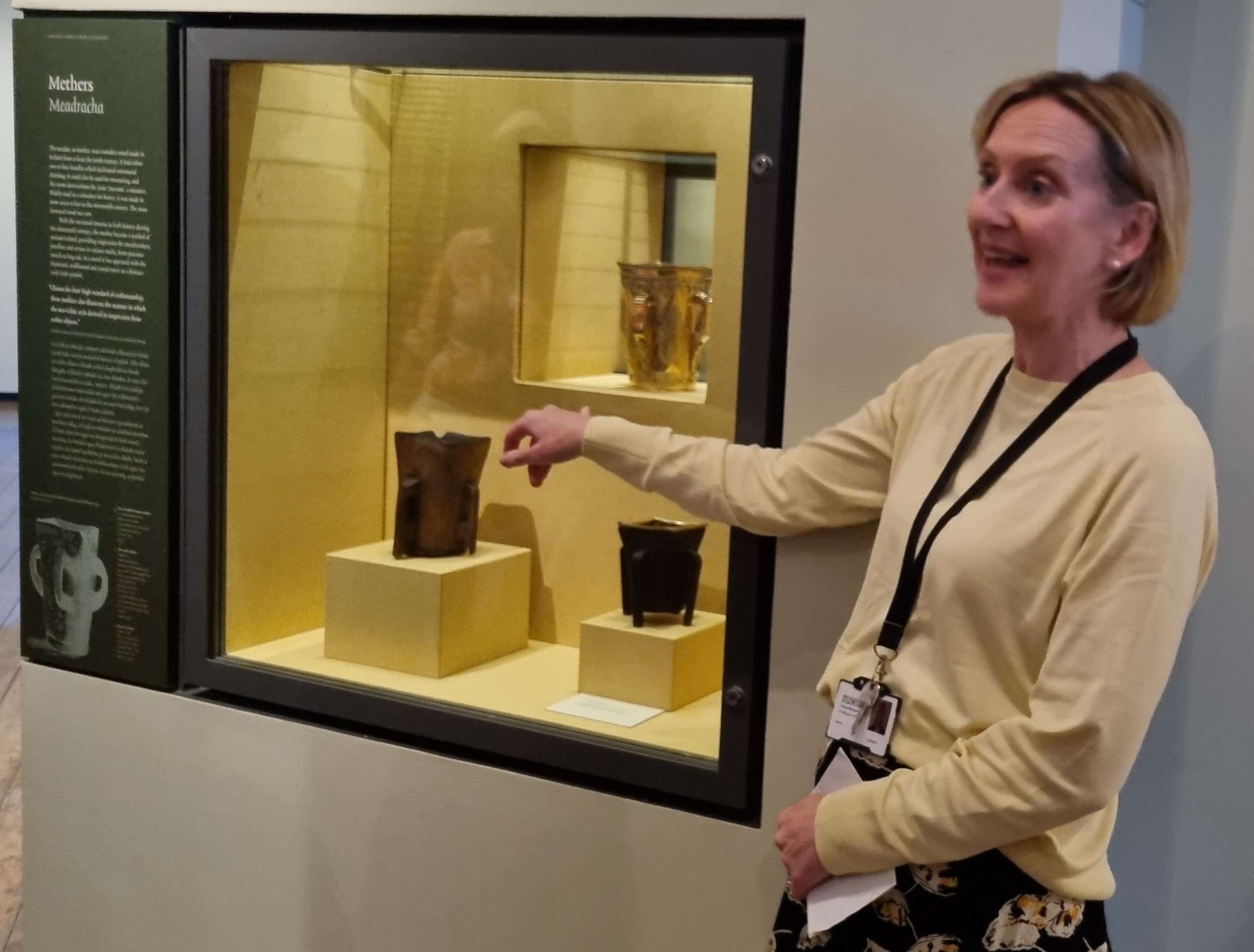
‘mether’ vessels originating from at least the 10th century – unique to ancient Celtic Ireland
William Smith O’Brien Cup [Melbourne Cup]
Our guide told the very interesting story of the nationalist politician William Smith O’Brien, who was transported to Tasmania because of his part in the rebellion of 1848. He was honoured by his compatriots when he was pardoned six years later. A presentation cup, made from 24 carat gold, was commissioned from William Hackett, a Dublin goldsmith then resident in Melbourne. The cup is decorated with Irish and Australian symbols, and it depicts Hibernia carrying a cap of liberty and crowning Smith O’Brien with a laurel wreath. Conscious of the sacrifice of his compatriots and the symbolism of the piece, Smith O’Brien bequeathed the Cup to the Royal Irish Academy to ensure its preservation for posterity.
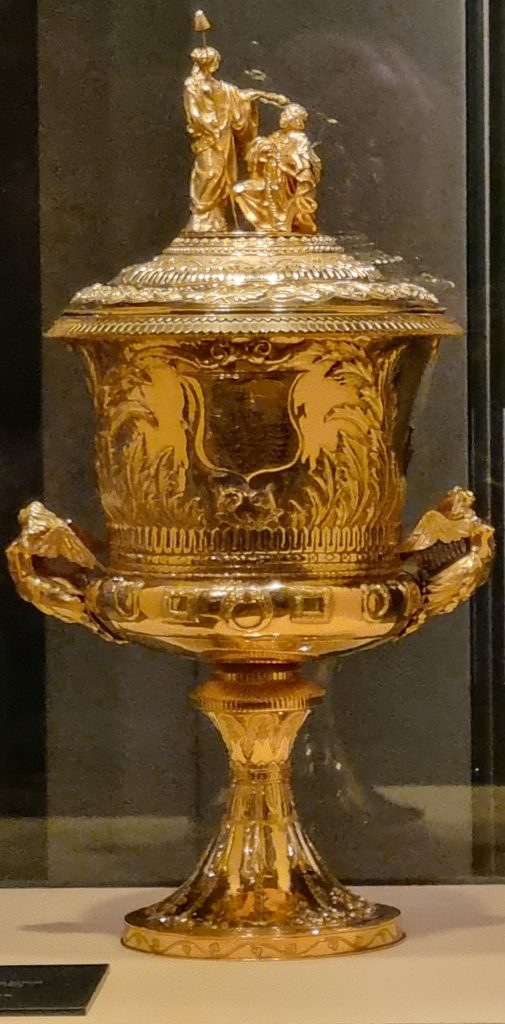
The Fonthill Vase
The Fonthill Vase is the earliest documented piece of Chinese porcelain in Europe and it is regarded as one of the Museum’s great international treasures. It was made of celadon porcelain, about 1330 AD. When the Vase was brought to Europe shortly afterwards, it was treated as semi-precious stone and hence given silver-gilt mounts. As Europeans were unable to make porcelain until over four centuries later, such objects were treated with great respect.
![Museum object - The Fonthill Vase [China 1330]](https://laoisindublin.com/wp-content/uploads/2025/05/The-Fonthill-Vase-China-1330-620x1024.jpg)
Harry Clarke Stained Glass
Harry Clarke (1889 – 1931) is one of Ireland’s most renowned stained-glass artists and illustrators. His work is celebrated internationally for its originality of design and impressive technical skill, not least in Ireland where his work is present in 16 counties, mostly in churches.
The panels on display in Harry Clarke’s Stained Glass each reveal Clarke’s distinct vision, inviting visitors into the world of religious and fantastical imagery that defined his career.
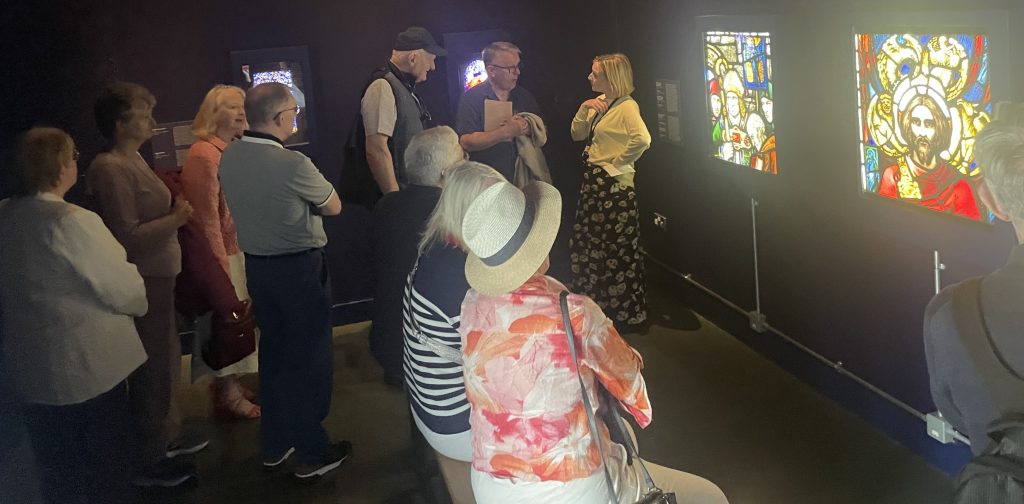
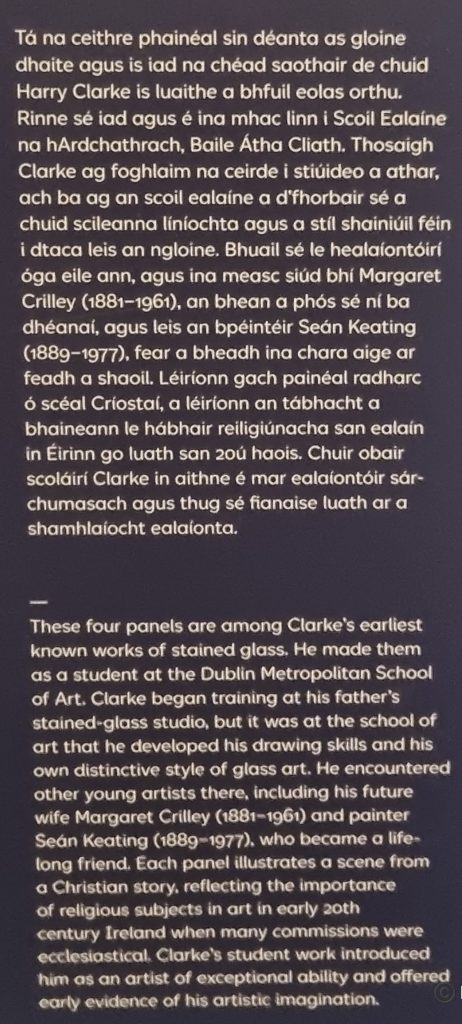
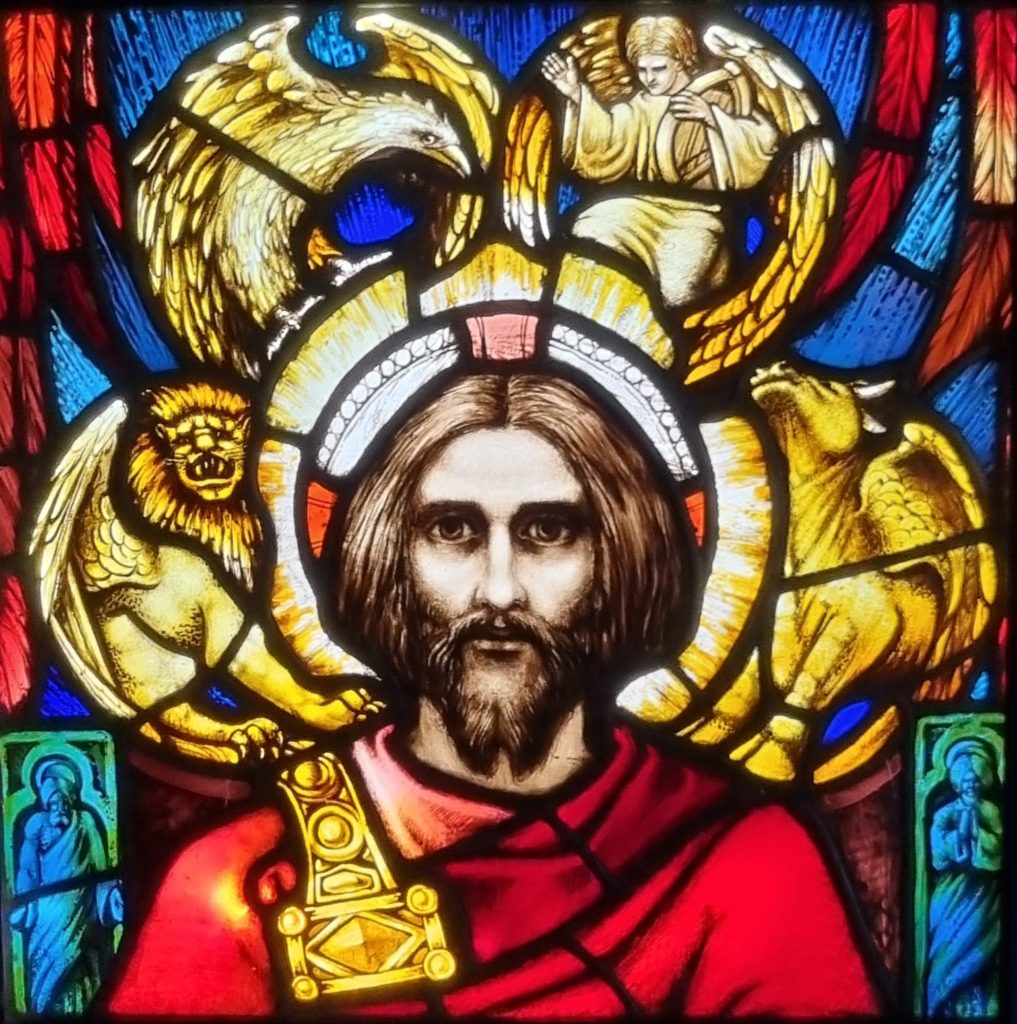
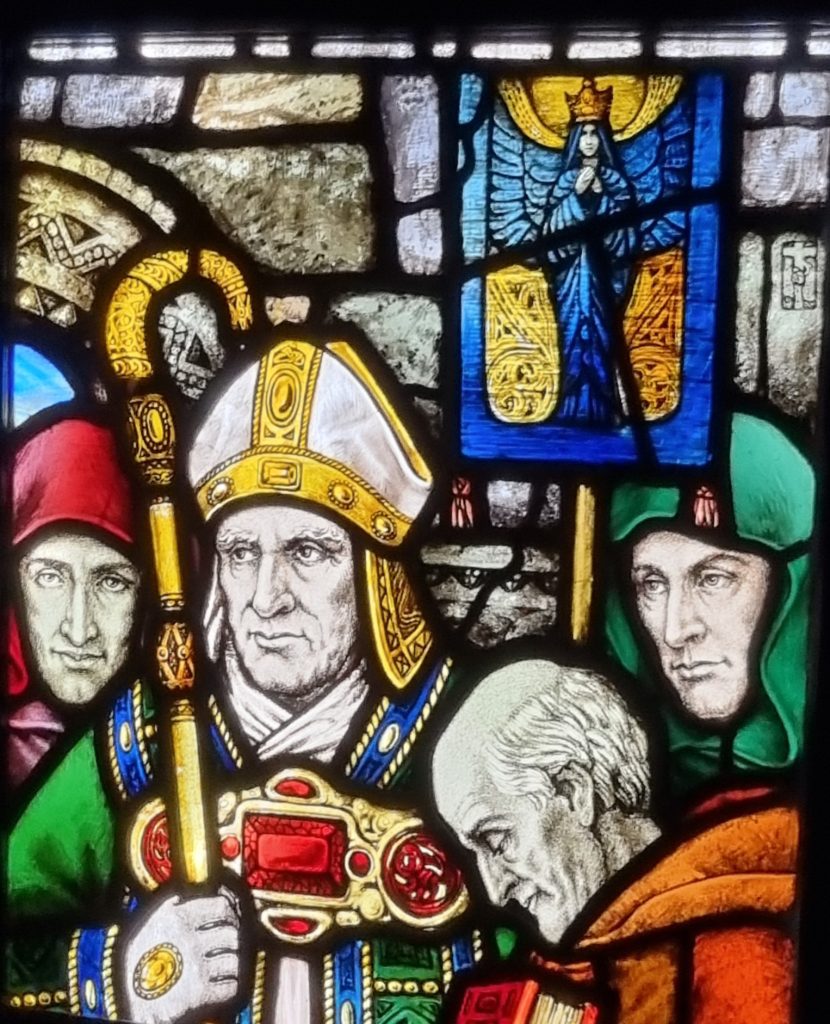
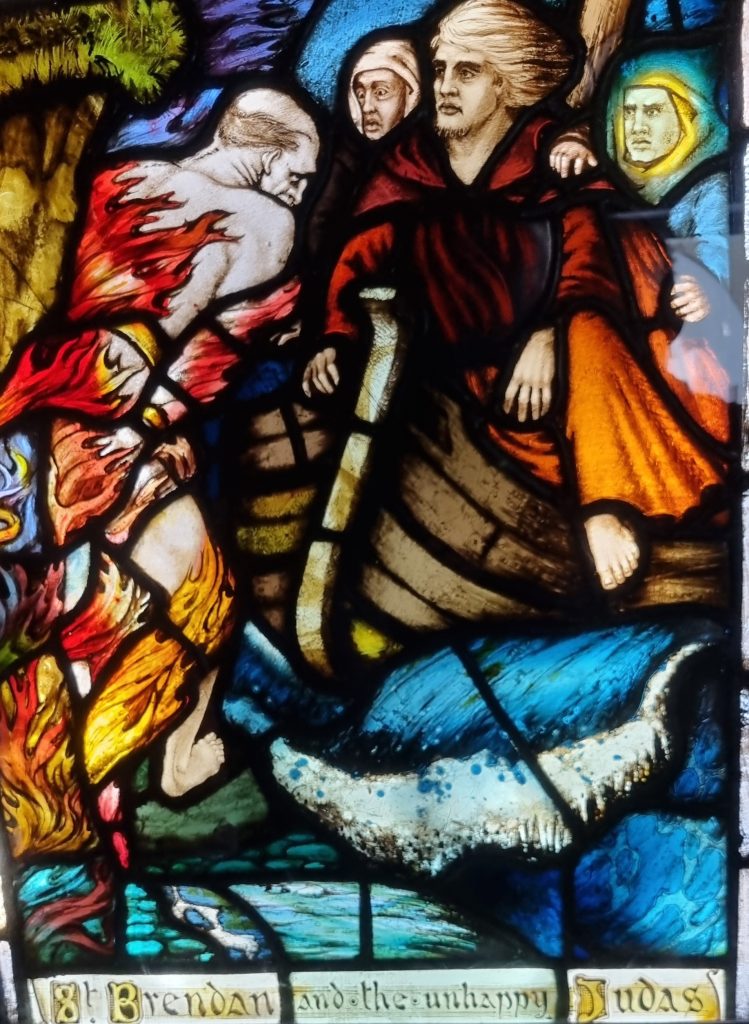

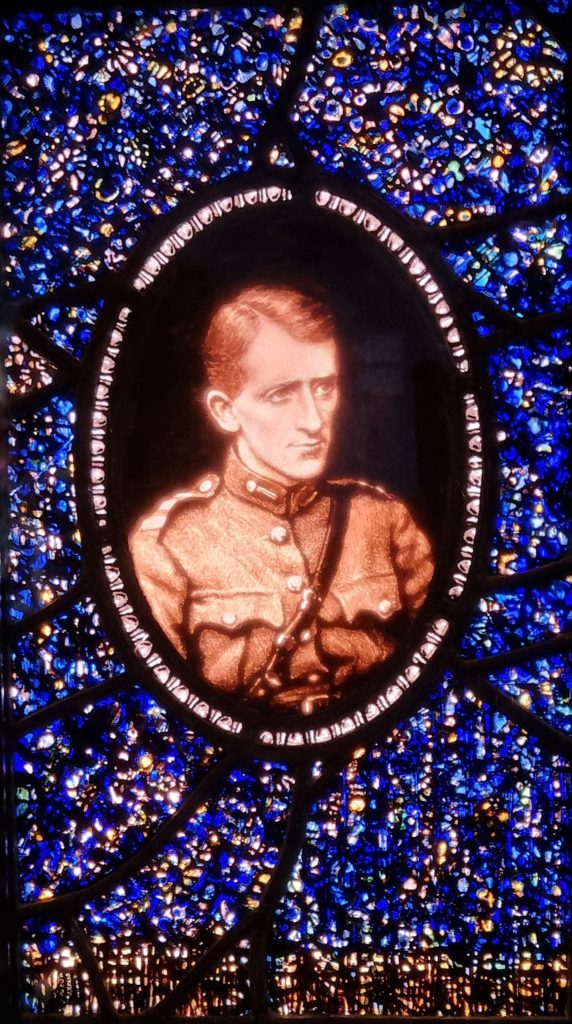
Our enlightening visit to the National Museum of Ireland, Collins Barracks, concluded with a warm round of applause for our very informative guide, Catriona, together with wrap-up words of appreciation from our Chairman Gerry Thompson.
Lunch at the Chesterfields Brasserie in the Ashling Hotel, Dublin
When the guided tour of the Museum concluded our group enjoyed the 5-minute walk to the Ashling Hotel, Dublin. There we enjoyed a delicious 4-course lunch served by welcoming staff in a beautifully decorated dining space at the Chesterfields Brasserie.
